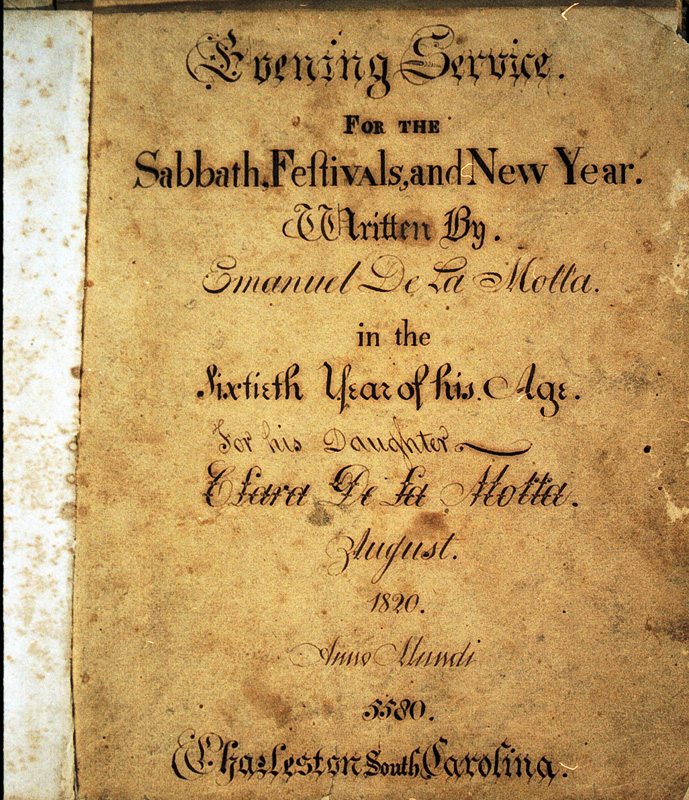Emanuel DeLaMotta
Merchant and Mason
Born in St. Croix, Emanuel DeLaMotta (1760–1821) is thought to have come to Charleston after the American Revolution. In 1787, he married Judith Canter (1771–1827), a sister of painters Joshua and John Canter. For several years, the couple lived in Savannah, where their son Jacob was born in 1789, before returning to Charleston. DeLaMotta was a prosperous commission merchant and a well-respected citizen. He was an active Mason, a member of Friendship Lodge No. 9 in Charleston, and a Grand Steward of the Grand Lodge of South Carolina, Ancient York Masons. In 1801, he joined ten other men to organize the Supreme Council of the Ancient and Accepted Scottish Rite.
DeLaMotta was devoted to his congregation. He is not known to have been among the men who broke with Kahal Kadosh Beth Elohim to join the “Portuguese Synagogue.” Nevertheless, in 1794, he was penalized by the adjuntaCouncil or governing body of a synagogue. of KKBE because he had his father, Isaac DeLaMotta, interred in the Portuguese Cemetery (Unveh Sholom Cemetery, known today as DaCosta Cemetery). His reason for doing so was not recorded, and by 1806 he took a leadership role at KKBE: he was one of several members who served as temporary hazanA cantor or prayer leader in a synagogue. During the eighteenth and nineteenth centuries, when there were few ordained rabbis in the United States, congregations often were led by hazanim, who were commonly referred to as “Reverend.” after the death of Abraham Azuby.
When Emanuel DeLaMotta died at the age of sixty, an anonymous friend published a lengthy eulogy in two Charleston newspapers. “The exit of Mr. Motta is felt by all who had the pleasure of his acquaintance; he was a link in the philanthropy chain, but the mandate of a Sovereign Ruler, has severed it. … The many virtues of Mr. Motta cannot be forgotten. He was a philanthropist, not nominally, but in reality. … His religious functions were strict and rigid. He was, indeed a pious man, and long has he contributed to the interest of his congregation. By them his death is felt.”
